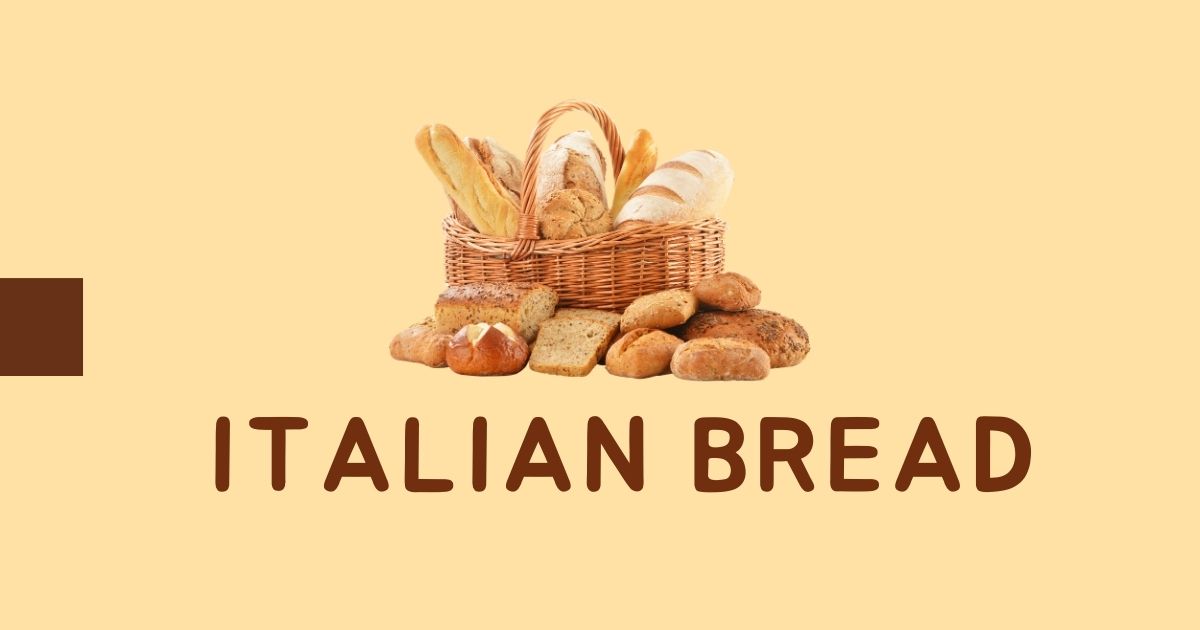Italian bread is a staple of Italian cuisine, known for its rich flavors, crispy crusts, and soft interiors. Whether served alongside a meal, used for sandwiches, or dipped in olive oil, Italian bread is loved worldwide. In this article, we’ll explore different types of Italian bread, how they are made, and how you can enjoy them at home.
What Makes Italian Bread Special?
Italian bread is unique because of its simple ingredients, traditional baking techniques, and the use of high-quality flour. Unlike some other types of bread, Italian bread often has a rustic appearance, with an airy, chewy texture and a crisp crust. Many types of Italian bread are baked in wood-fired ovens, adding a distinctive smoky flavor.
Popular Types of Italian Bread
Ciabatta
Ciabatta is one of the most famous Italian breads, known for its light, airy texture and crisp crust. The name “ciabatta” means “slipper” in Italian, referring to its flat and elongated shape. This bread is perfect for making sandwiches, especially paninis, as it absorbs flavors well while maintaining its structure.
Focaccia
Focaccia is a thick, flat bread that is often flavored with olive oil, rosemary, and sea salt. It has a soft, fluffy interior and a slightly crispy top. Focaccia is commonly served as an appetizer, side dish, or even a pizza base.
Pane Toscano
Pane Toscano, or Tuscan bread, is a salt-free bread traditionally made in Tuscany. It has a dense texture and pairs well with rich, salty foods like prosciutto, cheese, and hearty soups. The lack of salt gives it a mild flavor that enhances the taste of other ingredients.
Grissini (Italian Breadsticks)
Grissini are thin, crispy breadsticks that originated in Turin, Italy. They are often served as appetizers with dips, cheese, or wrapped in prosciutto. Their crunchy texture makes them a great snack.
Pane Siciliano
Pane Siciliano is a Sicilian bread made with semolina flour and topped with sesame seeds. It has a golden crust and a slightly nutty flavor. This bread is often enjoyed with olive oil and cheese.
Filone
Filone is an Italian bread similar to a French baguette but with a slightly softer texture. It is perfect for making sandwiches or simply enjoyed with butter and jam.
How to Make Homemade Italian Bread
Making Italian bread at home is easier than you think! Here’s a simple recipe for traditional ciabatta bread.
Ingredients:
4 cups all-purpose flour
1 ½ teaspoons salt
1 teaspoon sugar
1 packet (2 ¼ teaspoons) active dry yeast
1 ½ cups warm water
2 tablespoons olive oil
Instructions:
In a small bowl, mix warm water, sugar, and yeast. Let it sit for 5-10 minutes until foamy.
In a large bowl, combine flour and salt. Add the yeast mixture and olive oil. Mix until a sticky dough forms.
Knead the dough on a floured surface for about 10 minutes until smooth.
Place the dough in a greased bowl, cover, and let it rise for 1-2 hours until doubled in size.
Preheat your oven to 425°F (220°C). Shape the dough into a flat oval or rectangular shape.
Transfer the dough to a baking sheet and bake for 20-25 minutes until golden brown.
Let it cool before slicing and enjoy!
Best Ways to Enjoy Italian Bread
With Olive Oil and Balsamic Vinegar
One of the simplest and most delicious ways to enjoy Italian bread is by dipping it in olive oil mixed with balsamic vinegar. This enhances the bread’s natural flavors and adds a touch of acidity.
As a Sandwich Base
Italian bread is perfect for making sandwiches. Whether it’s a classic panini with mozzarella and tomatoes or a hearty sub with meats and cheeses, the sturdy texture of Italian bread holds everything together.
Paired with Cheese and Wine
A slice of fresh Italian bread with a piece of Parmesan or mozzarella cheese and a glass of wine makes for a perfect snack or appetizer.
In Traditional Italian Dishes
Italian bread is used in many traditional dishes, such as bruschetta, panzanella (bread salad), and ribollita (Tuscan soup). These recipes make great use of day-old bread, preventing waste while creating delicious meals.
Conclusion
Italian bread is more than just a side dish—it’s an essential part of Italian cuisine. With its variety of textures and flavors, there’s an Italian bread for every occasion. Whether you’re enjoying ciabatta with a sandwich, dipping focaccia in olive oil, or baking your own bread at home, Italian bread is a delicious way to bring the flavors of Italy to your table.
FAQs
What is the most popular Italian bread?
Ciabatta and focaccia are among the most popular Italian breads, known for their unique textures and flavors.
Can I make Italian bread without yeast?
Yes, some Italian breads like piadina (flatbread) are made without yeast. However, most traditional breads require yeast for their texture and rise.
How do I store Italian bread?
Store Italian bread in a paper bag or bread box at room temperature. Avoid plastic bags as they trap moisture and make the bread soggy.
Can I freeze Italian bread?
Yes! Wrap the bread in plastic wrap and place it in a freezer bag. When ready to eat, thaw at room temperature and warm it in the oven.
What flour is best for Italian bread?
Many Italian breads use all-purpose flour, but some, like Pane Siciliano, use semolina flour for added flavor and texture.
